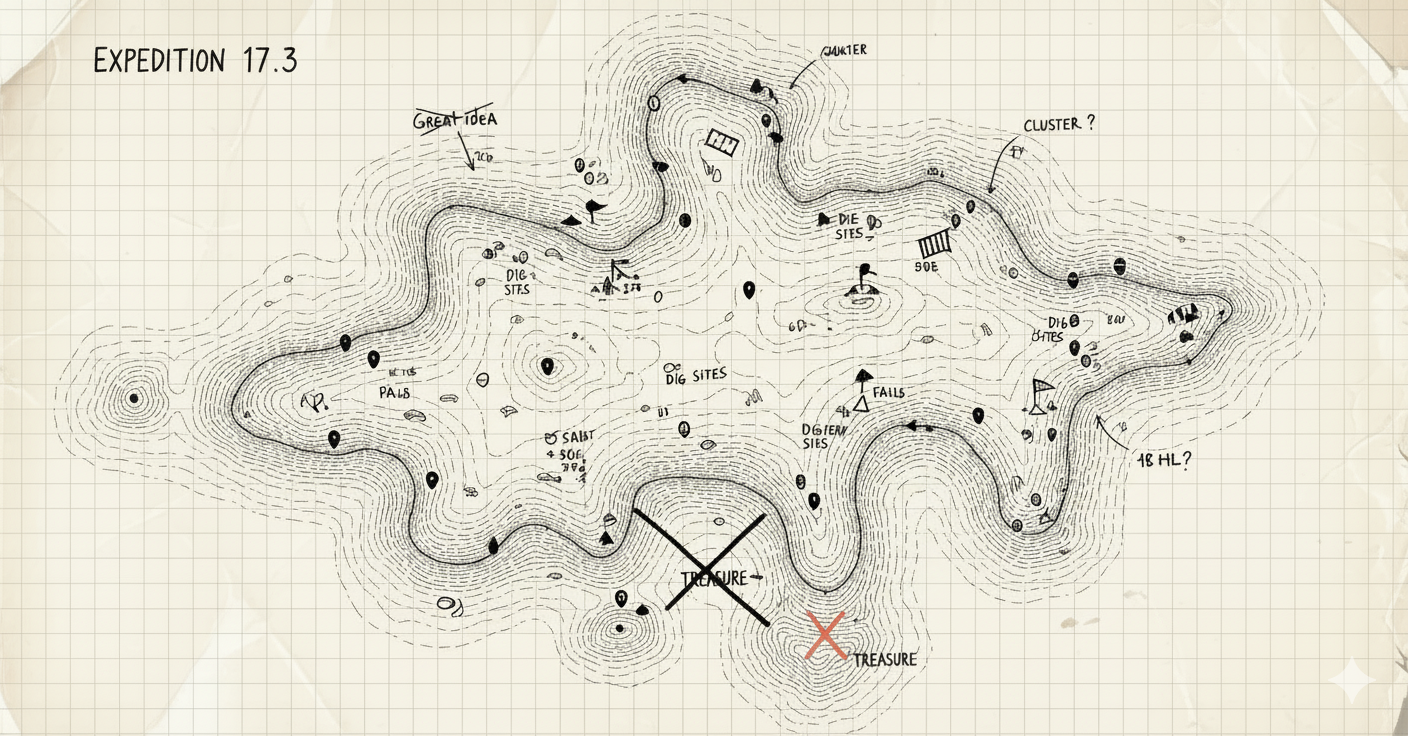Product discovery is the murkiest, most ambiguous period of an innovator’s journey; when it’s not clear where, or whether, value actually exists for an identified opportunity. It’s similarly the most challenging as a capital allocator - unlike a scaling company, there are no signals onto which we can latch our investments. There is hope and promise, sure, but these are scarcely more than coin flips - and coin flips are far from an optimal investment strategy. Yet this is precisely how most companies, startup and Fortune 500 alike, approach breakthrough innovation. Which begs the question - how should one deploy its “discovery capital”?
Innovating within your already successful company is a different task entirely from the fresh startups against which you compete; not because the uncertainty differs but because of the stakes and scale. The objective function of any scaling company intent on expanding beyond its core line of business is to generate a consistent, persistent stream of scalable, high-growth businesses.
This is a challenge of capacity - the efficacy of our personnel and the leverage provided by our discovery infrastructure - and especially of costs. Your pool of discovery capital available for investment is forever constrained, so we need to at least attempt to extract maximum value from every dollar invested - transforming how we deploy discovery capital, not just how much. The traditional startup provides us with a baseline here.
The median seed round is $2.5 million, designed to carry startups through initial development toward Series A readiness. A Seed is not exactly equivalent to discovery, but directionally the principles are similar - build a prototype, probably pivot a few times, and ultimately achieve a base level of customer traction that starts to resemble business viability. It’s close enough for us to use here as a comp. Now, startups rarely spend all of their raised capital, so let’s assume that 80% of funds have been deployed by the time the product formally launches - getting us to $2M per business launch.
But we’re still not quite there. We’re not interested in the cost for any startup launch but only the successful launch. We define “success” conservatively as any business that returns more capital than initially invested. A business that consumes $2 million in development capital and eventually returns even a single dollar more than $2 million represents "success." While such marginal outcomes would fall well short of our actual ROIC targets, this minimal threshold enables direct evaluation of systematic business creation feasibility.
Most startups don’t return value to investors. In fact, of all startups in the 2014/2015 vintage (useful because of the 10-year horizon for most venture funds) just 6.9% of seed-funded startups were “successful”:
This means that if development costs run $2M, and startups successfully return capital at a 6.9% clip, then the true median cost to develop a successful business in the traditional venture-startup model is $29M. This is our baseline.On its face this $29M figure is obviously concerning; a substantial sum that would render most zero stage development a non-starter for your business. As we hinted at above, there are two primary contributors to such a sum:
- The actual investment costs deployed into the given endeavor, here a $2.5M seed with 80% deployment for $2M in “discovery costs.”
- The success rates across a portfolio of such investments, just defined as a 7% expected rate to achieve a 1.0+ ROIC.
The cost vector is not, perhaps surprisingly, where we find much delta for improvement. Though AI will help here a bit in the coming years, our research, supported by our collective experience, demonstrates that the median seed is relatively efficient to fully deploy a new product to market. So if it’s not the costs itself, the only remaining improvement vector is the success/failure rate itself. Because the 93% failure rate isn't a law of nature - it's an artifact of how we develop breakthrough ideas.
Traditional approaches treat each innovation attempt as an independent bet, concentrating capital behind singular solutions selected through intuition, executive conviction, or market research ill-suited to predict what doesn't yet exist. This isn't wholly irrational - you’re doing your best with the tools and systems you have available. But when we accept that uncertainty is the defining characteristic of breakthrough innovation, we need to shift from gambling on individual outcomes to engineering a system that thrives on uncertainty itself. Instead of deploying $29M for each successful breakthrough, what if that same capital could systematically explore dozens of solution variants, transforming unprecedented failure rates from a bug into a feature?
This transformation requires more than incremental process improvements or better stage-gates. It demands a fundamental reconceptualization of how discovery capital creates value - not through prescient selection of winning solutions, but through comprehensive exploration that makes success statistically inevitable rather than fortunately accidental. When companies approach innovation this way, the economics shift dramatically: the cost per breakthrough plummets, the probability of finding optimal solutions soars, and perhaps most importantly, the entire process becomes learnable, repeatable, and improvable. The companies that recognize this shift won't just innovate more successfully - they'll render the innovation coin flip as obsolete as Edison's individual filament tests once systematic exploration took hold.



